Brie joins the Soil3 blog once again to teach us all about planting a natural insurance policy for flowers and the benefits of direct sowing.
Fall is upon us and it is the perfect time to get planting for the cool season.
There are endless possibilities for transforming your landscape into a beautiful and bountiful space with easy-to-grow crops that require very little maintenance.
 Poppy and larkspur seeds are planted in the fall for a bounty of spring flowers.
Poppy and larkspur seeds are planted in the fall for a bounty of spring flowers.
As a northern transplant, I used to consider fall to be the end season, as a long cold winter would soon turn the garden into a snowy, frozen tundra.
Upon moving to North Carolina I quickly realized that autumn was not a season of finale but rather a time of incredible opportunity. As the days get shorter and cooler temperatures grace our region, fall is the perfect season to enjoy time spent outside.
The Science of Soil Temperature
There are some tricks I have learned over the years for successful cool season vegetable production.
One consideration is soil temperature. Of course we all think about air temperature — 70 and sunny means it’ll be a perfect day for short sleeves! But how does that influence seed germination?
 Mustard and kale seedlings germinating in the fall
Mustard and kale seedlings germinating in the fall
This is where stratification comes into play. Now before you get too overwhelmed, let me say that stratification is really simple. It is just how seasonal change influences a seed’s ability to germinate. Some seeds are tricky, but most vegetable seeds have a low stratification requirement and will germinate regardless of conditions.
But back to soil temperatures ... have you planted tomatoes in early spring and wondered why they didn’t start to grow immediately? That was likely because the soil was still cold and, though the air temps where appropriate, the plant was actually confused because the root system was unable to thrive in chilly soil.
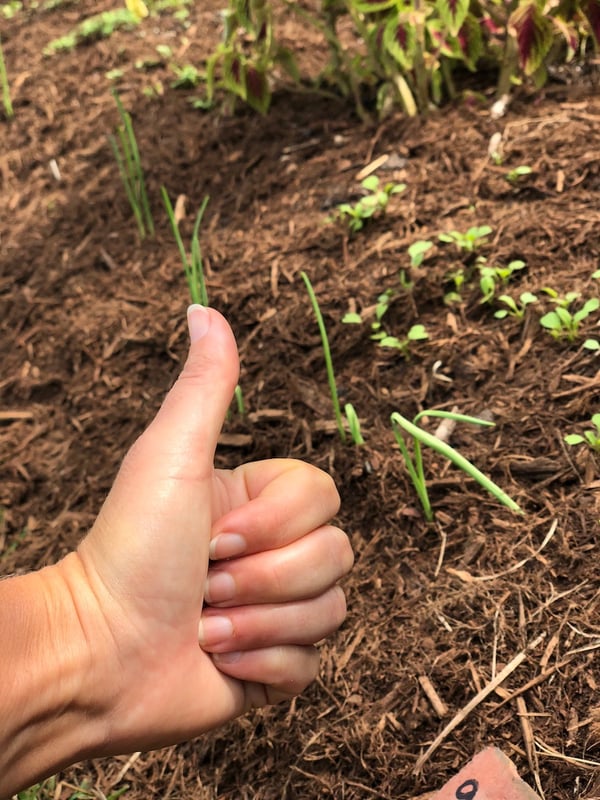 Soil bed preparation and proper soil temperatures mean healthy germination and growth
Soil bed preparation and proper soil temperatures mean healthy germination and growth
The same goes for cool season crops when planted too early in hot soil, having been heated from the summer. October is such a great month to get crops like lettuce, kale, beets, radishes, and so much more planted from seed because the soil has cooled.
 Topdressing a bed with Soil3 before planting seeds
Topdressing a bed with Soil3 before planting seeds
Of course, besides the right timing, another way to ensure good germination is to topdress your beds with Soil3 compost. I layer it right on top of the mulch by adding 1/2” to 1” and then plant directly in it. You can direct sow your seeds or plant your favorite vegetable starts such as cabbage, cauliflower, and broccoli.
Time to Get Seeding
My favorite way to grow cool season vegetables is to direct sow seed right in my landscape beds. This method is inexpensive and efficient. By covering areas of open mulch space you reduce weed pressure and take advantage of existing square footage that can be harvested.
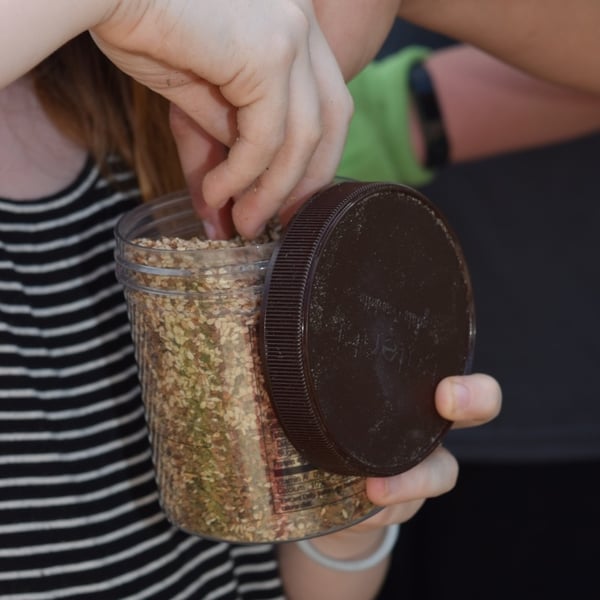
Not every crop is meant to be direct sown, specifically heading vegetables need to be planted with appropriate spacing to ensure full development. Heading vegetables refer to crops like broccoli, cabbage, cauliflower, collards, and Brussels sprouts that need more space to develop fully.
 Grow broccoli from a vegetable start and ensure proper spacing rather than direct seeding.
Grow broccoli from a vegetable start and ensure proper spacing rather than direct seeding.
The seeding opportunities are endless with cool season vegetables. From arugula to turnips and everything in between I recommend growing a wide assortment to increase color, texture, and long-term harvestability.
Brie’s fall direct-sown vegetable recommendations:
- Arugula
- Beets
- Carrots
- Chard
- Cilantro
- Lettuce
- Kale
- Mustard
- Parsnips
- Radish
- Spinach
- Turnips
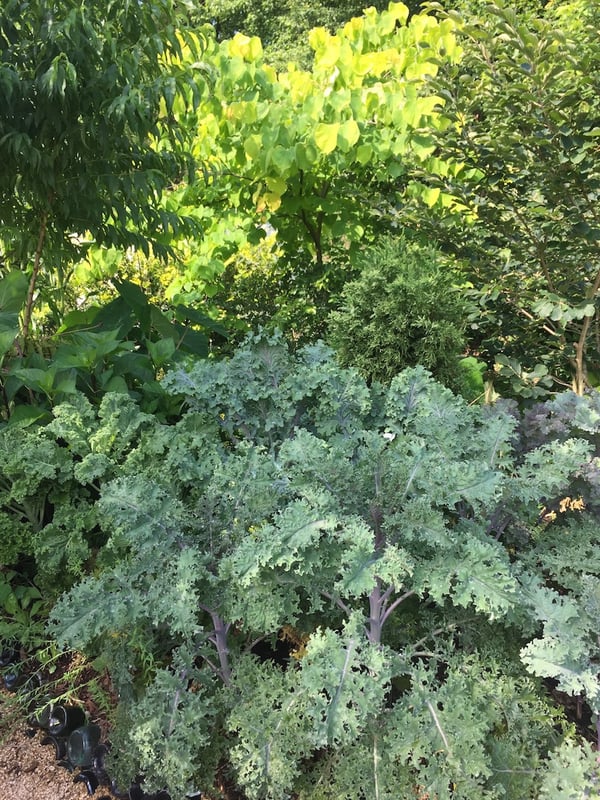
Brie’s fall direct-sown flower recommendations:
- Bachelor Buttons
- Larkspur
- Love in a Mist
- Poppies
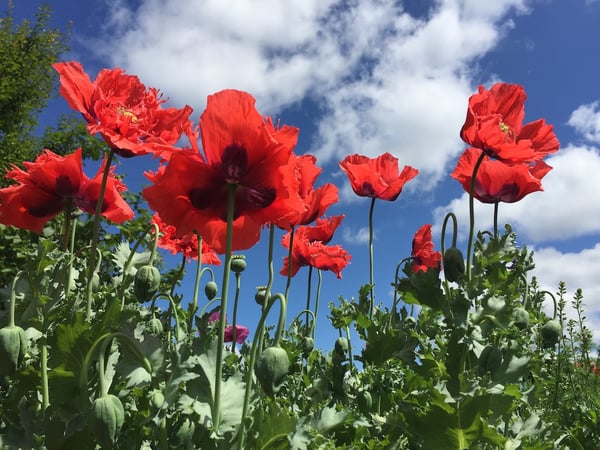 Poppies flowering in the spring (from seeds that were planted the autumn before)
Poppies flowering in the spring (from seeds that were planted the autumn before)
Fall is for Planting Garlic
Of course fall is the season to get your bulbs planted, and it’s not just bulbs for spring flowers like tulips and daffodils. This is an ideal season to plant garlic and onions which supply tasty harvests in late spring but also help ward off problems with in-ground mammals like moles and voles.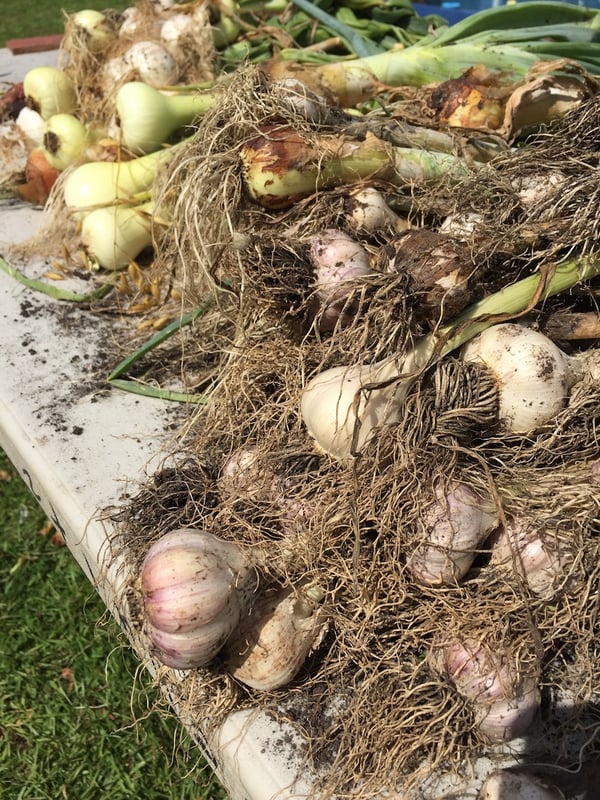 I like to use my edges to plant garlic because it gives me an “insurance policy” against aggressive browsing mammals while supplying me with a meaningful harvest. I haven’t had to purchase garlic from a grocery store in years, and I promise you homegrown tastes better!
I like to use my edges to plant garlic because it gives me an “insurance policy” against aggressive browsing mammals while supplying me with a meaningful harvest. I haven’t had to purchase garlic from a grocery store in years, and I promise you homegrown tastes better!
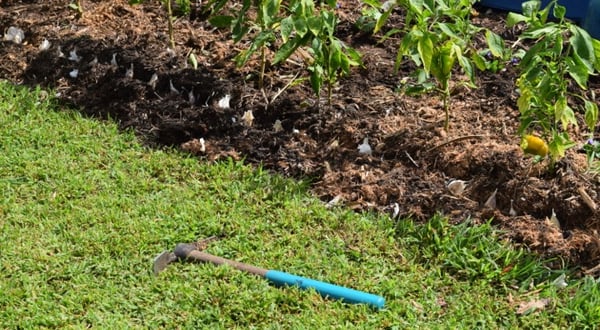 Garlic edging the vegetable beds
Garlic edging the vegetable beds
Planting is EASY! Start by adding 1/2” of Soil3 compost. You can topdress the entire bed or just focus it right along the bed edge. Simply break apart the garlic head into individual cloves, then thumb a clove into the ground. You don’t need to dig a hole or even remove the paper from the clove.
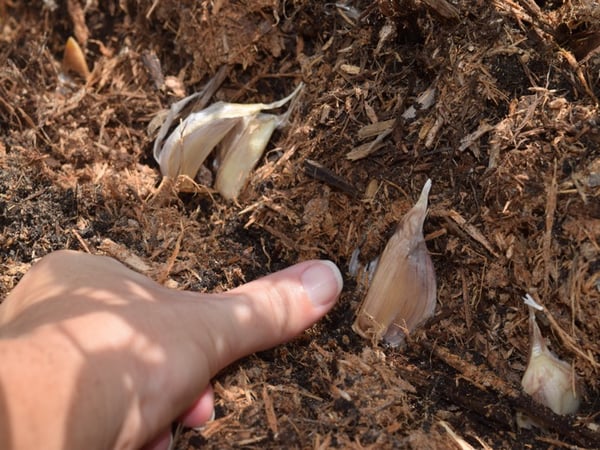
Thumbing a clove into the ground
In mid-spring, generally around Mother’s Day, flower stalks will appear...those are called garlic scapes and you want to break them off close to the ground. This will allow the energy of the plant to go back into root development rather than flower and seed production.
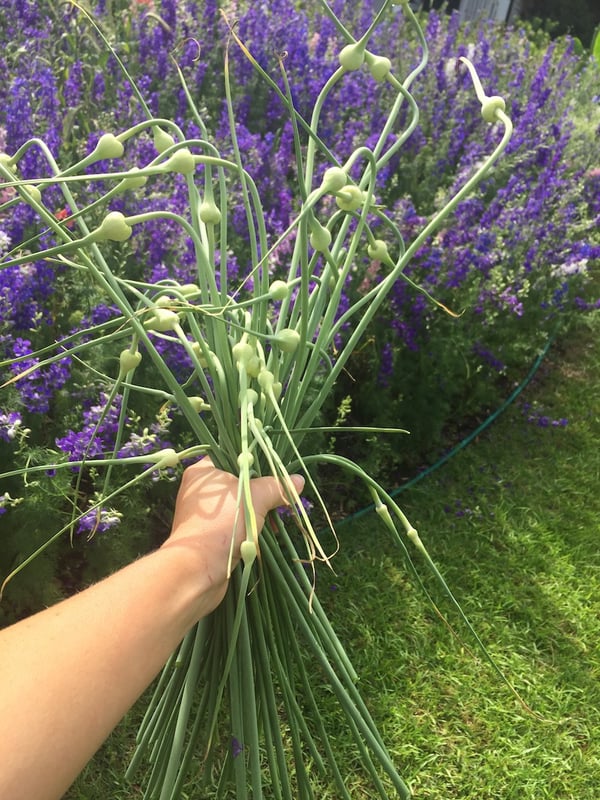 Freshly harvested garlic scapes
Freshly harvested garlic scapes
The garlic scapes are a spring delicacy. You can sauté them, grill them, or food process them into garlic scape pesto.
The great thing about garlic foliage and scapes is they do not have the same enzyme as the bulb, allowing people with reflux reactions to enjoy the flavor without the digestive upset.
As the days get long and the temperatures rise, the garlic foliage will start to turn brown from the tips down. That is your signal that is time to harvest. Simply walk along your edge, mulling the bulbs out of the ground and allow to dry, or cure, in an area with good air flow.
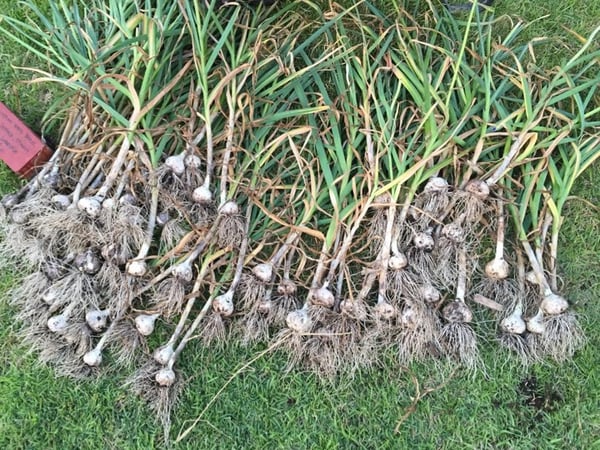 Freshly harvested garlic bulbs, harvested later that season (long after the scapes were harvested)
Freshly harvested garlic bulbs, harvested later that season (long after the scapes were harvested)
If you don’t have a covered porch, you can hang your garlic in a garage or shed and run a fan for a few days to ensure the bulbs and foliage dry out. Proper curing will increase the shelf life of your garlic and provide you with year-round homegrown bulbs!
 Hanging garlic to dry
Hanging garlic to dry
The main reason I encourage you to grow your own garlic is bigger than just warding off the voles. The truth is, as of 2012, 90% of the garlic sold through American grocery stores is imported all the way from China. That’s 7,000 miles away for those of us living in the Southeastern US!
If you want to help reduce your food miles footprint, simply growing your own garlic will make a big difference. So consider planting a sunny bed edge with garlic and make a difference in the world!
Happy fall planting,
Brie
P.S. I hosted an Instagram "takeover" of the Soil3 account where I shared tips for transitioning your garden from summer to winter. I posted how-to videos and advice from my foodscape on October 26th. Check out the photos and the highlight "Fall Gardening" for a recap of the day!

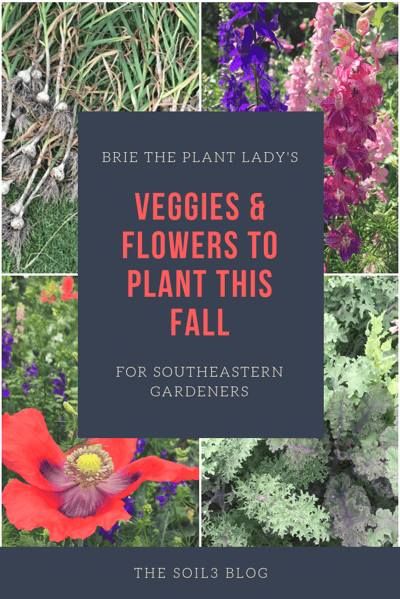



Did this help you out? Have any questions for clarity? Leave a comment below!